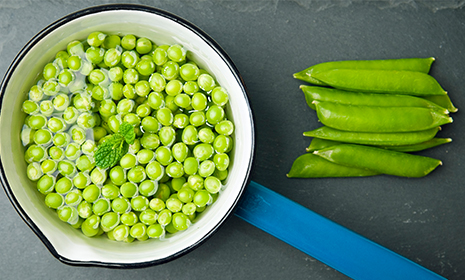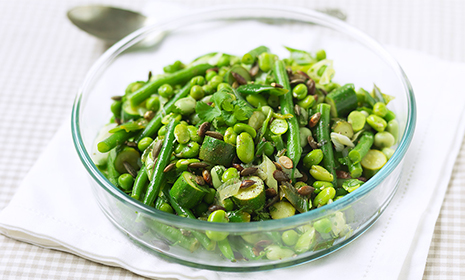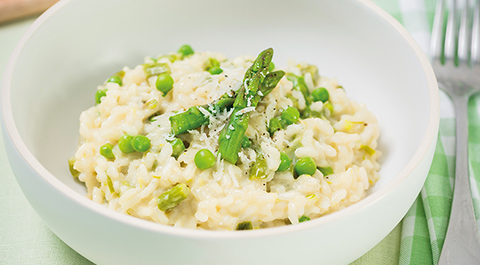A plateful of peas
Either at home alongside a roast dinner, adding value to fish and chips, or bringing colour to a risotto, peas are a popular ingredient that offers a quick one of your five-a-day.
Believe it or not, this classic vegetable is actually a fruit, and the peas themselves are the seeds of that fruit. Whatever you call them, a few peas can make a great addition to a variety of meals.
Peas are high in vitamin C and contain vitamin A and B too. They're also a great way to get fibre, potassium and iron.
A family favourite
Peas are often one of the first vegetables that children are introduced to, and take mere minutes to boil and add to a quick dinner. However, there's a lot more to them than it may seem...
Buying peas
Whilst peas are in season, try to pick up those that are less than a few days old. Since peas are generally frozen soon after picking, they're nearly as healthy when bought frozen as they are when they are fresh.
Stored like a pea in a pod
Fresh peas are best kept in the fridge, in a zip-locked or sealed plastic bag. To ensure they stay fresh for longer, don't shell them until you're ready to use them.
Preparing perfect peas
If you buy fresh peas in the pod, the best way to remove (shell) them is by hand. Frozen peas do not need to be defrosted before cooking.
How to cook
Peas need very little time to cook, taking just 2–3 minutes whether fresh or frozen. Boil or steam them in a pan with a small amount of water.
Some varieties of peas, such as snow peas, can also be stir-fried. Simply place them into a frying pan with a small amount of oil. Cook on a medium heat for 1 minute, stirring continuously to ensure even cooking.
Fresh peas can also be served raw as part of a salad, a side dish, or made into a purée.
Putting peas to good use in our tasty recipes...




